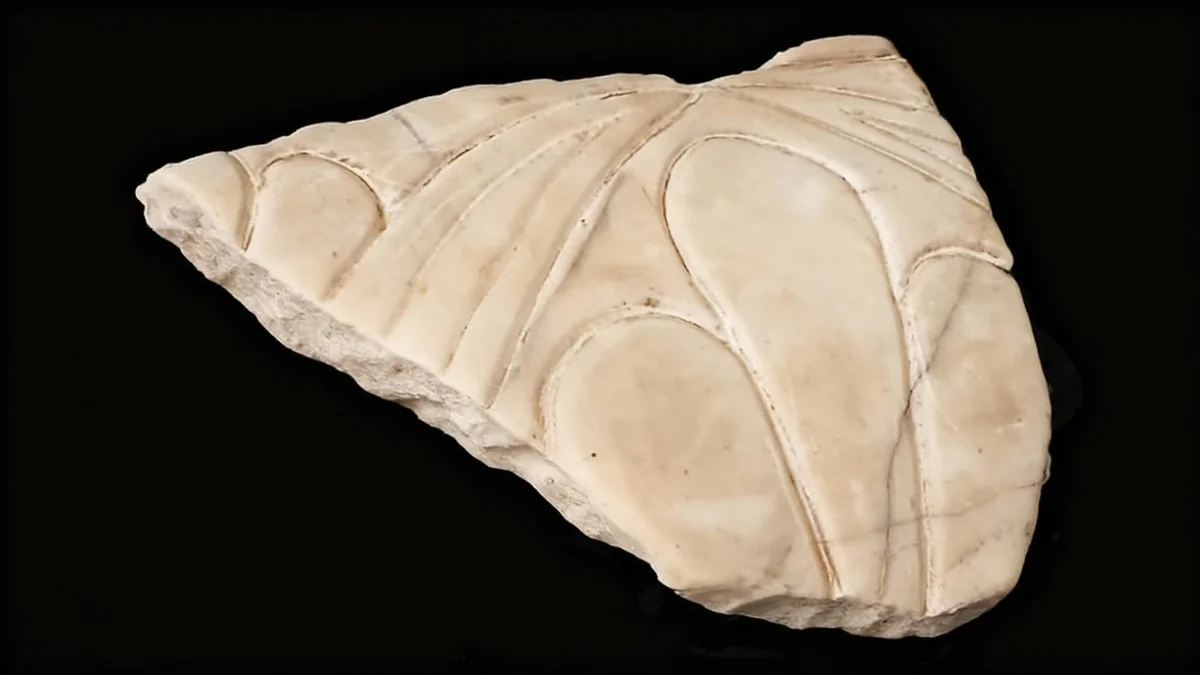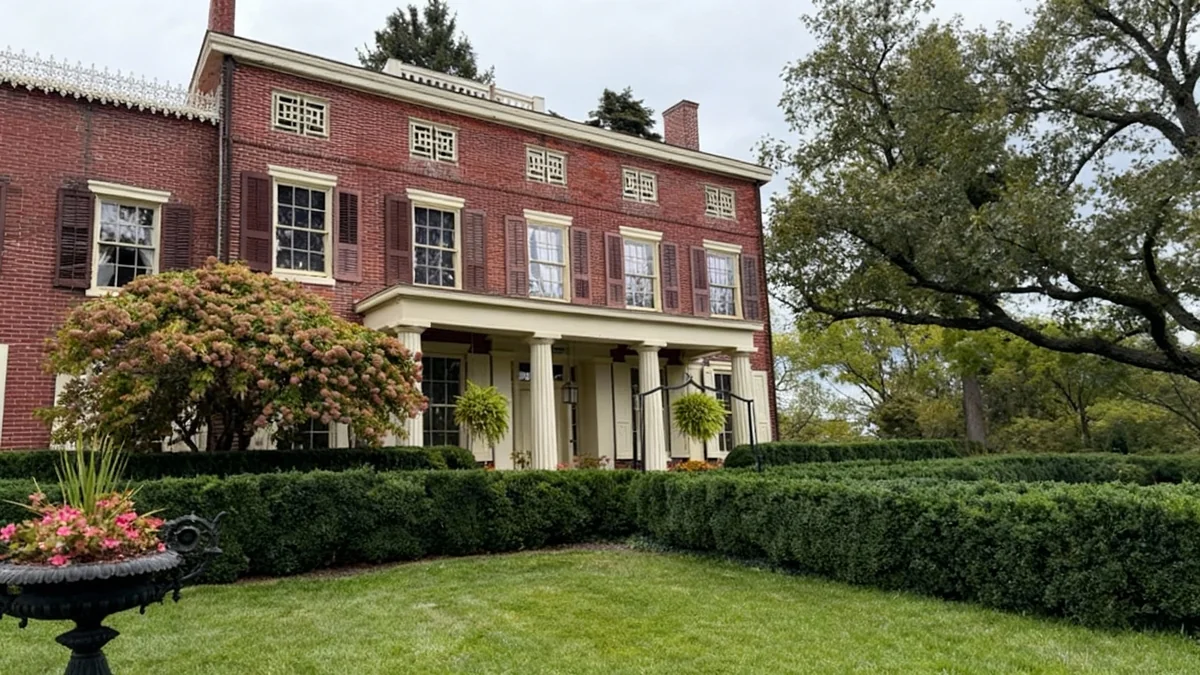A Civil War monument, known as the Mountaineer War Memorial, stands largely unnoticed on the West Virginia Capitol grounds in Charleston. This statue, once at the center of a major political and social debate, reflects the state's complex history during the conflict. Its story highlights efforts to shape West Virginia's identity and memory of the war.
Key Takeaways
- The Mountaineer War Memorial is a hidden Civil War statue at the West Virginia Capitol.
- William Seymour Edwards commissioned the statue to honor West Virginians who fought for the Union.
- The statue aimed to counter negative stereotypes of Appalachian people.
- It depicts a home guard member, not a standard Union soldier, leading to controversy.
- The Grand Army of the Republic refused the gift in 1912, impacting Edwards' political career.
Civil War Monuments at the Capitol
Visitors to the West Virginia Capitol in Charleston can see several Civil War monuments. Three statues are prominently displayed on the main lawn. These include a Union soldier, a larger-than-life figure of Abraham Lincoln, and a monument to Confederate officer Thomas "Stonewall" Jackson.
However, a fourth monument remains less visible. It is located in a grove of trees along California Avenue. This statue, the Mountaineer War Memorial, carries a significant and often overlooked history about West Virginia's founding and its connection to the Civil War.
Did You Know?
Approximately 20,000 West Virginians fought for the Union during the Civil War. Many served in traditional blue uniforms, while others participated as home guards and scouts.
The Vision of William Seymour Edwards
The concept for the Mountaineer monument originated with William Seymour Edwards. Born in 1856, Edwards grew up admiring Abraham Lincoln and remained a lifelong Republican. He was the son of William Henry Edwards, a wealthy New Englander who developed early commercial coal mines in West Virginia.
William Henry Edwards was a notable figure. He kept his mines operational to support Union efforts during the war. After the war, he became a renowned entomologist, writing the three-volume "Butterflies of North America." He also traveled extensively and authored books on his journeys, later exploring Shakespearean authorship.
William Seymour Edwards' Early Life and Career
William Seymour Edwards inherited his father's drive and intellectual curiosity. He also developed a strong interest in politics. He served in a local militia, earning the rank of colonel, a title he used throughout his life. In 1892, he published "The Coals and Cokes of West Virginia." He also wrote adventure travel books, including one about his trip to the Yukon during the Klondike Gold Rush.
Historical Context: West Virginia's Formation
West Virginia became a state during the Civil War in 1863. It separated from Virginia, which had seceded from the Union. This unique origin made the state's relationship with the Civil War particularly complex and often contested.
Challenging Negative Stereotypes
By the early 20th century, Edwards became concerned about how West Virginians were portrayed nationally. Newspapers often depicted mountain residents as "hillbillies," focusing on feuds like the Hatfields and McCoys. These portrayals suggested a savage and irrational people, a view Edwards strongly rejected.
Edwards believed West Virginians had a proud history. He saw them as strong, steady farmers, foresters, and miners who answered Lincoln's call to preserve the Union and end slavery. The state seal, with its motto "Montani Semper Liberi" (Mountaineers Are Always Free), reinforced his view of their independent spirit.
To celebrate this heritage, Edwards decided the state capitol needed a monument. He wanted it to honor the heroism of West Virginians during the Civil War. He commissioned Henry Kirke Bush-Brown, a well-known sculptor, for the task. Bush-Brown had already created three equestrian statues of Union heroes at Gettysburg.
Choosing the Mountaineer Model
Edwards wanted the statue to represent the "race" of West Virginians on the national stage. He worked with Bush-Brown to find an ideal model. They found two brothers, Ellis and Eli "Rimfire" Hamrick, in Webster County, who agreed to pose for the sculptor.
Edwards specifically instructed Bush-Brown to depict the ideal West Virginian not in a standard federal Union uniform. Instead, he wanted the dress of a local home guard unit. This choice aimed to represent all West Virginia mountaineers who fought for the Union and freedom, including those in irregular units.
"Erected to commemorate the Valor of Those who On April 15, 1861, in instant response to the first call of Abraham Lincoln formed themselves into the intrepid Home Guards who held in check unaided the forces of Wise, and Lee, and Jackson, until the Federal Armies came and driving the Confederates across the Alleghenies made possible the creation of the state of West Virginia; and also of those who as incomparable scouts & riflemen gave themselves to the nation and with dauntless courage and sagacity assisted in assuring to mankind 'That Government of the People, By the People, for the People, shall not perish from the earth.'"
— Inscription on the Mountaineer monument plaque
The Confederate Counter-Narrative
While Edwards' monument was underway, another group was promoting a different Civil War narrative. In 1910, the United Daughters of the Confederacy erected a statue of Thomas "Stonewall" Jackson on the Capitol grounds. This was part of a national effort to advance a pro-Confederate view of the war.
Some West Virginians saw Jackson as a strong figure, a counter to negative mountain stereotypes. However, others were concerned that a Confederate figure was honored before any Union combatants. The Charleston Advocate, a Black newspaper, reported on the Jackson statue's dedication. It noted attendees wearing "Lily White" buttons, a symbol of a movement seeking Jim Crow segregation in the state.
Union veterans in the state also felt this slight. Local members of the Grand Army of the Republic (GAR), an organization for Union veterans, began raising funds for their own Union soldier monument at the Capitol.
The 1912 Dedication Controversy
In 1912, two years after the Stonewall statue was unveiled, Edwards' monument to a Union home guard was ready. This year was significant for West Virginia and for Colonel Edwards personally. Coal miners in the Edwards family's original coal fields began a deadly strike for better wages and conditions, leading to years of mine wars.
Edwards was also a leading candidate for a U.S. Senate seat. He hoped the statue's dedication would unite the state, divided by both Civil War memory and class tensions between miners and mine owners. He believed a successful unveiling would boost his Senate chances.
Edwards meticulously planned the dedication. He composed a song, "The Hymn of the West Virginians," and had it set to music. He arranged for a thousand schoolchildren and a hundred-person choir to perform it. The song's chorus placed West Virginians at the center of national history:
- "They are calling from the mountains! They are calling from the plain!"
- "Hear the great refrain! From Maine to San Francisco O’er our blessed, cloud-kissed land!"
- "West Virginia! West Virginia! Rolls the echo grand!"
One verse directly challenged the pro-Confederate "Lost Cause" narrative. It emphasized the unity of West Virginians across social classes in answering Lincoln's call:
"And when the dark cloud of secession Came creeping over the land; When slavery’s silent aggression From whisper turned into command Then instant, from mountains and valley, From mansion and cabin as one, At the first call of Lincoln they rally, And save what their fathers have won!"
The Grand Army of the Republic's Refusal
Edwards planned to formally present the monument to the Grand Army of the Republic. However, at the last minute, the GAR decided to boycott the ceremony and reject the gift. They felt the statue, depicting a home guard rather than a federal soldier, did not represent the Union soldier they wished to honor. They feared accepting it would hinder their efforts to install a kepi-wearing Union soldier monument.
This refusal was partly due to existing biases against irregular units. One Ohio soldier, writing in his hometown paper, described these "greybacks" or "Home Guards" negatively. He questioned their courage and loyalty, suggesting they were Unionists only when federal troops were present.
"The squirrel hunter is alright... He had his place in the war, too. But he doesn’t represent the Union soldier."
— Speaker at the 1930 Union soldier monument dedication, referring to Edwards' statue
The GAR's rejection was a public embarrassment for Edwards. His political opponents used this misstep against him. His Senate aspirations faded, and his "Hymn of the West Virginians" was forgotten. The moment of unity he hoped for dissolved into political infighting.
Edwards' Later Years and Legacy
The violence of the West Virginia mine wars continued to escalate after 1912. In February 1913, an armored train attacked a miners' settlement, leading to many deaths. The mine wars lasted another decade.
Edwards did not live to see peace return. He died in December 1915 at age 59, less than three years after the controversial monument dedication. His Mountaineer monument remains on the Capitol grounds, but it is not in a prominent position. It is tucked away, often overlooked by passersby, a quiet testament to a complex chapter in West Virginia's history.
His family's ancestral home, Bellefleur, built by William Henry Edwards in 1871 near the Cabin Creek mine, still stands. It is occupied by Edwards family members and is listed on the National Register of Historic Places.





